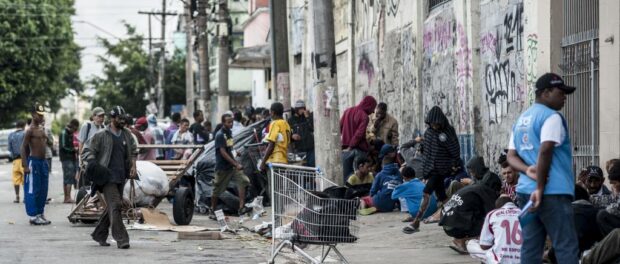
For the original by Carl Hart, Eliana Sousa Silva and Julita Lemgruber in Portuguese in O Globo click here.
What do favelas and ‘cracolândias’ (‘crack lands’) have in common? Both suffer the same problems: they are defined through stereotypes and made into scapegoats, preventing the attribution of responsibility for social issues that no one wants to face. More than this, prejudiced views of favelas and cracolândias end up justifying disrespectful and violent ways of approaching the people who live in these spaces.
In the case of the favelas and suburbs of large cities, the popular image is of unfinished houses and precarious living conditions, where poverty, lawlessness and violence prevail. Seeing the favela just from this perspective ignores the social and cultural universe produced by its residents, the vibrant life that flows daily through its streets and alleys, and the networks of sociability and solidarity built there. It means ignoring a history of organization and struggles, and all that favela residents have represented and represent in the construction of the nation.
With regard to cracolândias, there is the widespread belief that they are spaces populated by ‘zombies,’ by violent and repugnant people with unpredictable behavior, by automatons guided only by the desire for the drug, with no capacity for discernment. However, it only takes the courage to visit a real cracolândia, as we did in one of the favelas of the Complexo da Maré–to see people using crack, yes, drinking alcohol and eventually arguing–but also sharing food, affection and solidarity. Men and women whose lives have been turned upside down in the blink of an eye: job loss, family breakdown, abandonment. And what they found in the streets, among crack users, was the necessary support to survive. Unlike what is commonly believed, many of these individuals did not come here for crack, but for numerous other personal, economic and social reasons. Crack is what today offers them the small moments of pleasure they still find in life.
In the cracolândia we saw dozens of miserable people, living in makeshift shacks surrounded by piles of trash, unattended by the most basic public services. Yet even like this, they are capable of building arrangements for co-living and mutual support, of reflecting on their stories and their current situation, of making decisions and formulating demands.
This is not to deny the existence of the serious problems resulting from abuse of crack. But we can’t confront these problems with stereotypes. On the contrary, the stereotypical images sometimes serve as an ostrich-like strategy, as with the acceptance of hostile ‘solutions’ behind which are often hidden vested interests, such as those of certain ‘therapeutic communities’ which promote compulsory hospitalization policies financed with public funds.
The abandonment that favelas have historically faced is the same that can be observed today in relation to the so-called ‘crack lands.’ There is a tendency to deal with these spaces using prejudiced labels that generate fear, distrust and disrespect. If the image of the favela as the den of bandits justified decades of violent and illegal action on the part of the police, rather than public policy to integrate these spaces into the urban fabric, the image of cracolândias as a den of ‘zombies’ gives strength to similarly violent and discriminatory measures, in place of appropriate support to meet the real needs of users.
Carl Hart is a professor at Columbia University, Eliana Sousa Silva is director of the NGO Redes da Maré, Julita Lemgruber is a sociologist and coordinator of Cesec/Ucam
